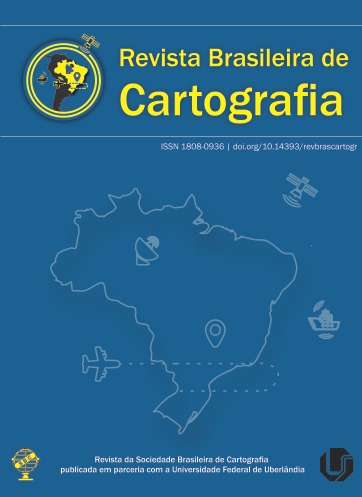Estimation of Forest Biomass for Energy Purposes Using Vegetation and Field Data Indices, District of Mabalane - Mozambique
Main Article Content
Abstract
In sub-Saharan Africa, the intense exploitation of forests for the extraction of firewood and coal in arid and semi-arid areas. The District of Mabalane supplies the cities of Maputo, Matola and Xai-Xai with firewood and charcoal. However, there is little knowledge about the availability of biomass in these areas. The present study aims to: analyze the relationship between NDVI derived from the satellite image and the biomass estimated in the field; model the estimate of biomass in arid area. NDVI values were obtained from the Landsat-8 satellite image. In the field, fifteen plots with an area of 30 x 30 m were geo-referenced and all live woody plants with a diameter at breast height (DBH) equal to or greater than 2.5 cm were measured and heights and DBHs and their biomass estimated from allometric equations . The NDVI values at the sampling points varied between -0.508 and -0.236, positively correlated with the biomass values estimated in the 3 equations, which ranged from 5.32 to 56.87 {t.h} ^ {- 1}. The linear regression between NDVI and biomass in the model that presented the best result, obtained a coefficient of determination R2 = 0.882. The regression equation adjusted from indirect measurement of biomass and vegetation index by normalized difference (NDVI), made it possible to estimate forest biomass in semi-arid areas by remote sensing, with an error of 36% in the area of the present study. The adjusted model can be used to support biomass estimation studies using remote sensing and field data in similar areas.
Downloads
Metrics
Article Details
Authors who publish in this journal agree to the following terms:
- Authors retain copyright and grant the journal right of first publication with the work simultaneously licensed under a Creative Commons Attribution License that allows others to share the work with an acknowledgment of the work's authorship and initial publication in this journal.
- Authors can enter into separate, additional contractual arrangements for the non-exclusive distribution of the journal's published version of the work (e.g., post it to an institutional repository or publish it in a book), with an acknowledgment of its initial publication in this journal.
- Authors are permitted and encouraged to post their work online (e.g., in institutional repositories or on their website) before and during the submission process, as it can lead to productive exchanges, as well as earlier and greater citation of published work (see "The Effect of Open Access").





